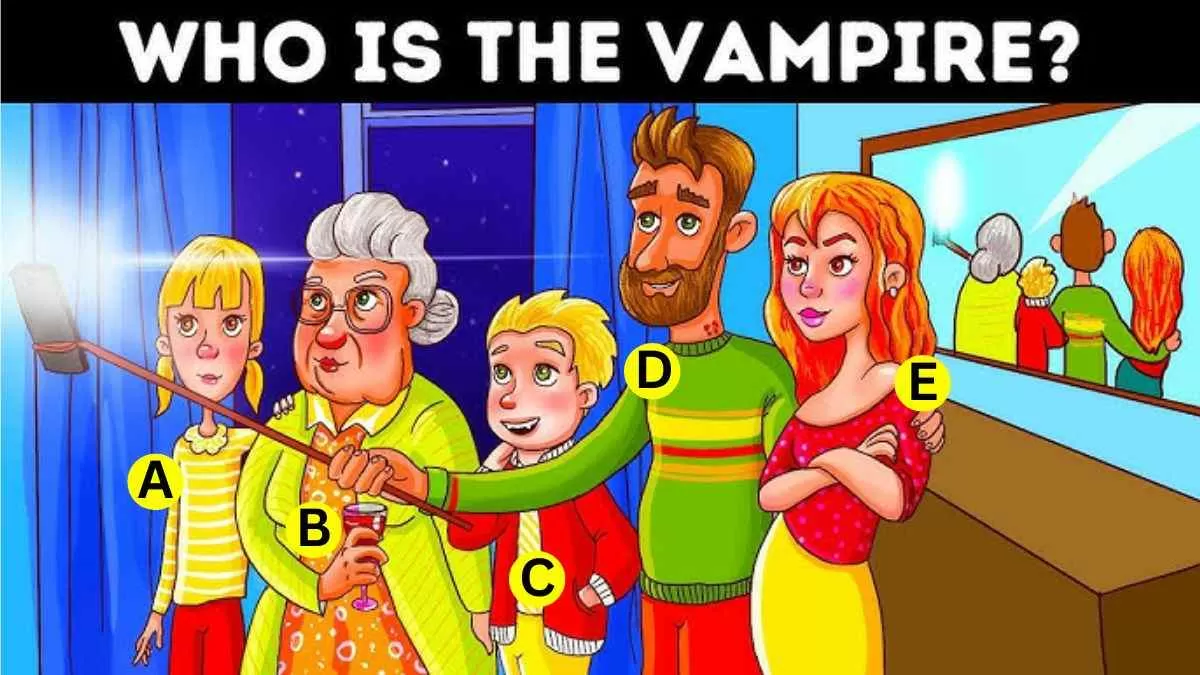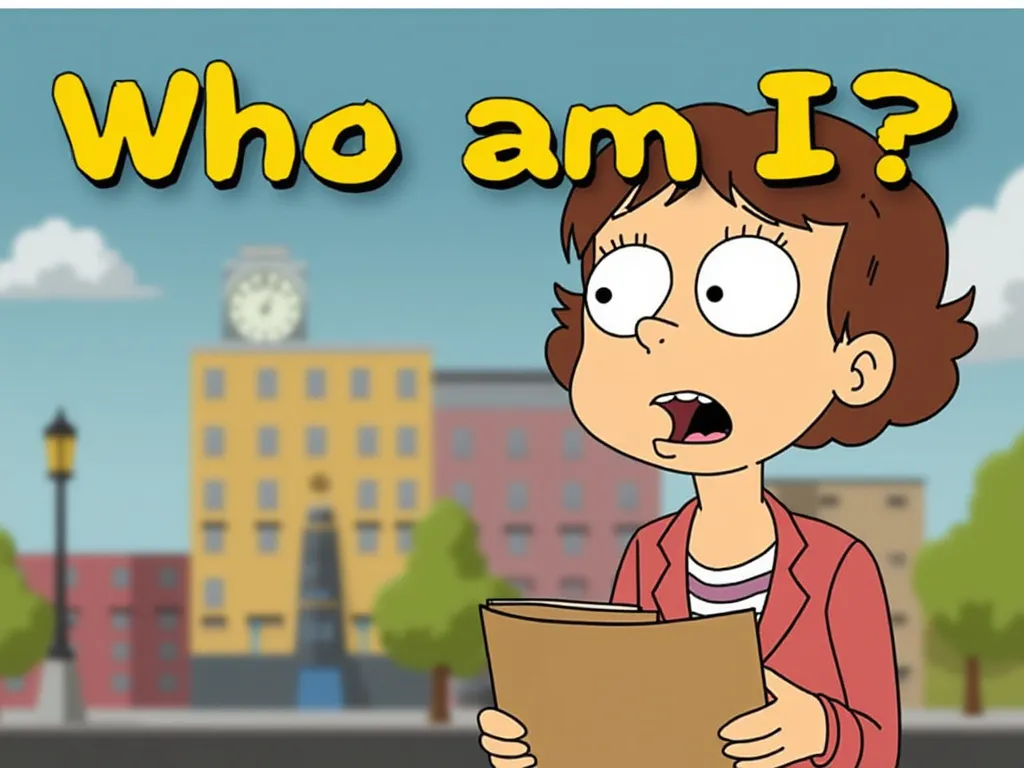Subtle Animated Riddles are brain teasers that use motion or visual effects to conceal or reveal clues. Unlike static riddles, these puzzles incorporate animation to add an extra layer of challenge, making them more engaging and interactive.
The animation can be as simple as a flickering light, a shifting shadow, or a slowly appearing word that hints at the answer.
These riddles require keen observation and logical thinking, as the movement may be deceptive or misleading.
For example, a candle’s flame might subtly form a hidden word when it flickers, or a water ripple may distort a clue before revealing the answer.
Subtle animated riddles are popular in digital media, including social media, video games, and interactive puzzles.
They stimulate critical thinking, problem-solving, and attention to detail, making them great for both entertainment and cognitive training.
Because they require both visual and mental engagement, these riddles are often more immersive than traditional ones.
If you enjoy brain teasers that challenge both your eyes and your mind, subtle animated riddles are a fun and fascinating way to test your skills.
How Do Animated Riddles Work?


Animated riddles use motion, timing, and visual effects to hide or reveal clues, making them more engaging and challenging than traditional puzzles.
These riddles rely on subtle movements, such as a shifting shadow, flickering text, or changing colors, to guide the solver toward the answer.
At their core, animated riddles blend visual perception with critical thinking. The animation may mislead the viewer at first, requiring careful observation to uncover the hidden details. For example:
- A word slowly appears within a fading mist, revealing the answer.
- A reflection in water subtly shifts to form a hidden message.
- A blinking light flashes in a Morse code pattern.
- A spinning object aligns briefly to display a clue.
These riddles work best in digital formats, such as videos, GIFs, or interactive games, where motion enhances the puzzle-solving experience.
By combining visual tricks with logical problem-solving, animated riddles engage the brain in a unique way, making them an exciting challenge for puzzle lovers.
10 Mind-Bending Animated Riddles to Solve


Get ready to challenge your brain with these mind-bending animated riddles! Each one uses subtle movement, visual tricks, or hidden clues to test your observation skills and logical thinking.
Can you solve them all?
The Fading Letters
A word slowly disappears, but a few letters remain.
Can you guess the hidden word?
The Shifting Shadow
A shadow moves across the screen, briefly forming a recognizable shape.
What does it reveal?
The Flickering Flame
A candle’s flickering light spells out a secret message.
Can you read it?
The Water Ripple Riddle
A reflection in a pond looks distorted—until the ripples settle.
What do you see?
The Clock’s Secret
A clock’s hands move in a strange pattern.
Decode their positions to find the answer.
The Blinking Code
A light blinks in Morse code.
Can you translate the message?
The Hidden Word Puzzle
Letters subtly rearrange themselves in an animation.
What’s the final word?
The Disappearing Path
A trail slowly fades, leaving behind a hidden clue.
Where does it lead?
The Changing Colors
A background shifts colors—only one reveals the hidden answer.
Can you spot it?
The Spinning Secret
An object spins, aligning at a certain point to reveal the answer.
Can you catch it in time?
These animated riddles are designed to test both your visual perception and problem-solving skills.
Why Animated Riddles Challenge Your Brain
Animated riddles are more than just fun—they engage your brain in unique ways that enhance problem-solving skills, visual perception, and cognitive flexibility.
Unlike traditional puzzles, these riddles use motion, timing, and visual deception to make the challenge even harder.
They Require Sharp Observation
Animated riddles often hide clues within subtle movements, like a flickering light or a shifting shadow. Your brain must detect and interpret these small changes to find the answer.
They Enhance Pattern Recognition
Many of these riddles involve repeating sequences or evolving shapes. Training your brain to spot patterns helps improve memory and cognitive speed.
They Improve Focus and Attention to Detail
Since clues may appear for just a moment, animated riddles force you to pay close attention and stay mentally engaged. This strengthens concentration skills over time.
They Boost Logical Thinking
Deciphering an animated riddle often involves connecting visual cues with logical reasoning. This stimulates critical thinking and problem-solving abilities.
They Challenge Your Brain’s Adaptability
Because motion can be misleading, your brain has to adapt and reassess constantly. This improves mental flexibility and the ability to process unexpected changes.
Can You Spot the Hidden Clues?


Animated riddles are designed to test your perception, logic, and attention to detail.
Unlike static puzzles, these riddles use motion, subtle changes, and timing to conceal important clues. The challenge? You have to spot them before they disappear!
What to Look For in Animated Riddles
Shifting Shadows – A shadow may briefly form a recognizable shape before fading.
Flickering Text – Some letters may flash or subtly change, revealing a hidden message.
Moving Objects – Watch how objects interact; their movement might create the answer.
Color Changes – The correct clue may only appear when colors shift in a certain sequence.
Illusions & Distractions – Some animations intentionally mislead you—can you see past the trick?
How to Solve Them Faster
Focus on small details – The answer is often hidden in plain sight.
Look for repeating patterns – Motion often follows a predictable cycle.
Pause and rewatch – Sometimes, a second look reveals the solution.
Types of Subtle Animated Riddles
Subtle animated riddles come in different forms, each using motion, illusions, and hidden clues to challenge the brain. Here are some of the most intriguing types:
Disappearing Clue Riddles
- A key part of the riddle fades in and out.
- The answer is only visible at certain moments.
- Example: A sentence where letters slowly vanish, revealing a hidden word.
Shifting Shadow Puzzles
- Shadows subtly form recognizable shapes.
- Observers must spot the hidden image before it changes.
- Example: A moving lamp causes a shadow to reveal an object’s true identity.
Flickering Text Riddles
- Words or letters flash on and off, sometimes in a pattern.
- The correct letters appear briefly to spell out the answer.
- Example: A neon sign that “glitches” to reveal a hidden message.
Optical Illusion Riddles
- Motion tricks the brain into seeing multiple interpretations.
- The riddle requires shifting perspective to find the right answer.
- Example: A rotating object that seems to change shape depending on the angle.
Hidden in Motion Riddles
- The answer only appears when something moves a certain way.
- Example: A spinning wheel where the correct answer aligns briefly in one position.
Color-Changing Clues
- Colors shift, revealing new patterns or hidden words.
- Example: A background that changes colors to reveal an invisible message.
Fun Facts About Subtle Animated Riddles
-
They Trick Your Brain
Subtle animated riddles use motion, illusions, and timing to mislead you before revealing the correct answer. Your brain often fills in gaps, making the challenge even harder!
-
Inspired by Optical Illusions
Many animated riddles borrow from classic optical illusions, playing with perspective, color changes, and hidden shapes to create mind-bending effects.
-
Used in Escape Rooms & Games
Digital escape rooms and puzzle games often include animated riddles to test players’ observation and problem-solving skills.
-
Your Attention Span Matters
The key to solving them? Patience! Many clues appear for just a split second, rewarding those with keen attention to detail.
-
They Boost Cognitive Skills
Solving these riddles strengthens pattern recognition, critical thinking, and memory, making them both fun and beneficial for your brain.
-
Some Use Hidden Codes
Advanced animated riddles may include Morse code, binary sequences, or color patterns that reveal a hidden answer.
-
Popular in Magic Tricks
Magicians use similar techniques to misdirect audiences, making animated riddles a fun blend of puzzle-solving and illusion.
Frequently Asked Questions About Subtle Animated Riddles
What are subtle animated riddles?
Subtle animated riddles are visual puzzles that use motion, illusions, and hidden clues to challenge your perception and problem-solving skills. They often require keen observation and logical thinking to solve.
How do animated riddles differ from regular riddles?
Unlike traditional riddles, which rely on text-based wordplay or logic, animated riddles use moving images, color shifts, disappearing elements, and timing tricks to conceal and reveal answers.
Where can I find animated riddles?
You can find them in puzzle apps, online brain teaser websites, digital escape rooms, and social media platforms where creators post interactive challenges.
Why are animated riddles so hard to solve?
These riddles play with visual perception, distractions, and subtle changes that can easily be overlooked. Your brain must adapt quickly to recognize patterns and hidden clues.
Conclusion About Subtle Animated Riddles
Subtle animated riddles are more than just fun brain teasers—they are a powerful way to sharpen your observation skills, improve problem-solving abilities, and enhance cognitive flexibility.
By using motion, illusions, and hidden clues, these riddles challenge your brain in ways that traditional puzzles cannot.
Whether you’re spotting flickering text, shifting shadows, or disappearing clues, each animated riddle encourages you to think critically, focus deeply, and embrace creative problem-solving.
Plus, they add an element of excitement and surprise, making the experience both engaging and rewarding.
With their growing popularity in games, social media, and digital puzzles, animated riddles continue to evolve, offering new and unique challenges for puzzle lovers worldwide.


